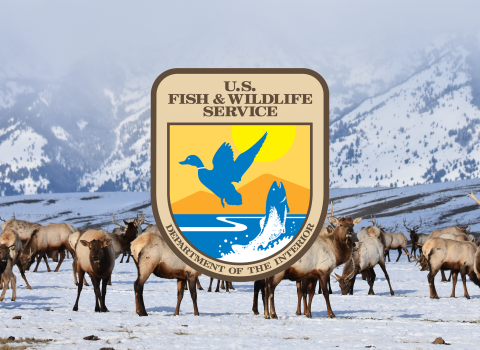In our increasingly urban society, studies have repeatedly shown that access to nature and the outdoors makes us healthier and happier. This is particularly true for children and young adults. The opportunities for residents of major urban areas across the country to gain that all-important access just received a substantial boost thanks to new and expanded partnerships led by the U.S. Fish and Wildlife Service through its Urban Wildlife Conservation Program. This initiative connects city residents with nature and engages thousands of volunteers in restoring local environments.
These programs were made possible by the 2016 Five Star grants from the National Fish and Wildlife Foundation, which generated over $2 million in direct contributions and matching funds from local partners.
“It’s becoming more difficult for our children to grow up healthy amid the treeless concrete-scape of our burgeoning cities,” said Dan Ashe, Director of the U.S. Fish and Wildlife Service. “By creating natural oases in the form of urban refuges and urban bird partnerships we can bring nature back to our cities and provide kids a tremendous health boost, the benefits of which will last their entire lives. We will also provide ourselves a wonderful respite from our own hectic, indoor, metropolitan lives.”
Four cities – Twin Cities, MN; Cincinnati, OH; Elizabeth, NJ; and West Palm Beach, FL – now join 17 others with Urban Wildlife Refuge Partnerships. These partnerships are collaborative efforts to provide residents of demographically diverse cities with fresh opportunities to get outdoors and experience nature within the urban environment. The partnerships encourage and nurture an appreciation of wildlife conservation among new audiences.
One new city – Springfield, MA – is now designated an Urban Bird Treaty city, joining 26 other such partnerships nationwide. The Urban Conservation Treaty for Migratory Birds, as it is formally known, works with cities and partners to conserve migratory birds through education, citizen science and conservation action in urban and suburban areas.
Funding will also support existing urban partnerships in Baltimore, MD; Denver, CO; Houston, TX; Jamaica Bay, NY; New Haven, CT; New Orleans, LA; Philadelphia, PA; Phoenix, AZ; Providence, RI; Seattle, WA; Yonkers, NY; and Washington, D.C. Learn more online at: http://www.fws.gov/urban.
“By committing additional funding through the Urban Wildlife Conservation Program, we will make a huge difference for communities and neighborhoods in cities across the United States,” said Ashe. “We thank the National Fish and Wildlife Foundation for its vision and dedication to improving the outlook for urban Americans, and for providing unique opportunities to nurture the next generation of wildlife stewards and conservationists.”
With 80 percent of Americans living in urban communities, the challenge to ensure natural resources are conserved and valued has become more complex. The Service is committed to serving this growing diverse, urban audience. The Urban Wildlife Conservation Program, launched in 2013, is providing new opportunities for residents of America’s cities to learn about and take part in wildlife habitat conservation.
The four new Urban Wildlife Refuge Partnerships’ focus areas are:
- Twin Cities, MN: Canoemobile: Discovering our Urban Wildlife Refuges: The Wilderness Inquiry, Minnesota Valley National Wildlife Refuge, Minneapolis and Saint Paul public schools, Saint Paul Right Track and other partners will showcase the Minnesota Valley National Wildlife Refuge as a community asset for 1,200 urban youth and their families through place-based education and recreation activities and restoration of 15 acres along the Minnesota River.
- Cincinnati, OH/Seymour, IN: Mill Creek Healthy People/Healthy River Program: This project will help restore and regenerate 17 acres of wildlife habitat and wetlands in Muscatatuck National Wildlife Refuge in Indiana and in multiple sites within the Mill Creek riverine- riparian riparian
Definition of riparian habitat or riparian areas.
Learn more about riparian corridor in Cincinnati, Ohio. It will also engage at least 960 participants, including 860 middle and high school students and 100 adult volunteers from Mill Creek neighborhoods and diverse organizations. - Elizabeth, NJ: Greenway Renewal Along Elizabeth's Urban Waters: Groundwork Elizabeth will partner with the Great Swamp National Wildlife Refuge to foster a productive and mutually beneficial relationship through two river restoration projects in Elizabeth, New Jersey. The project will engage youth from underserved communities in environmental projects that build stewardship around and improve access to amenities along the Elizabeth River and Travers Branch for communities around them.
- West Palm Beach, FL: Apple Snail Adoption Program (ASAP) - Teaching Youth About the Effect of Invasives On Natural Ecosystems: Florida Atlantic University Pine Jog will implement ASAP with at least 500 students in South Florida. The program will focus on propagating and restoring native Florida Apple Snail populations and the removal of invasive exotic snails in two locations: the Arthur R. Marshall Loxahatchee National Wildlife Refuge and the Grassy Waters Everglades Preserve.
The new Urban Bird Treaty city focus area is:
- Springfield, MA: This project will engage Springfield residents in citizen-science and stewardship-related activities to increase their knowledge and appreciation of bird conservation issues through the Sustainable Springfield Urban Refuge Partnership. Restoration and habitat improvements for resident and migratory birds will span the metropolitan area, comprising a network of “Neighborhood Habitat Refuges” in strategic locations. The projects will enable students to participate in habitat restoration, curricula-based bird education, population monitoring and bird conservation awareness.
Since 1999, the Five Star and Urban Waters Restoration Grant Program has supported more than 820 projects in 50 states, Washington, D.C., Puerto Rico and U.S. Virgin Islands. More than $9.8 million in federal funds and $7.9 million in private and corporate contributions have been leveraged with $67 million in matching funds at the local level.
The Service contributed $360,000 to this year’s projects. Other funding partners in the 2016 Five Star grant program include the U.S. Environmental Protection Agency, U.S. Forest Service, FedEx, Southern Company, Bank of America and Alcoa. For more information, visit: http://www.nfwf.org/fivestar.

